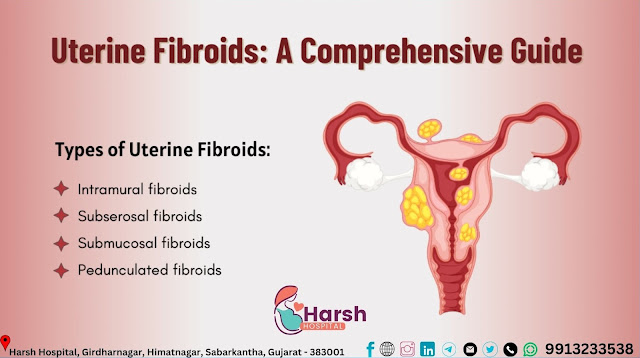 |
Uterine Fibroids: A Comprehensive Guide
Uterine fibroids are non-cancerous growths that develop in or around the uterus. While they are common, many women are unaware of their presence until they cause symptoms like heavy menstrual bleeding, pelvic pain, and fertility complications.
Understanding Uterine Fibroids
These benign tumors vary in size, ranging from tiny seedlings to large masses that can enlarge the uterus. They are classified based on their location:
🔹 Intramural Fibroids – Develop within the uterine wall
🔹 Subserosal Fibroids – Grow on the outer surface of the uterus
🔹 Submucosal Fibroids – Form under the inner lining of the uterus, often leading to heavy bleeding
🔹 Pedunculated Fibroids – Grow on stalks attached to the uterus
Symptoms of Uterine Fibroids
While some women experience no symptoms, others may notice:
✅ Heavy or prolonged menstrual bleeding
✅ Pelvic pain or pressure
✅ Frequent urination or difficulty emptying the bladder
✅ Lower back pain
✅ Pain during intercourse
✅ Difficulty conceiving or complications during pregnancy
Causes & Risk Factors
Although the exact cause remains unknown, several factors can increase the risk:
🔹 Hormonal Changes – Estrogen & progesterone promote fibroid growth
🔹 Genetic Predisposition – A family history of fibroids increases the likelihood
🔹 Obesity & Diet – High-fat, low-fiber diets may contribute to fibroid development
🔹 Pregnancy – Increased estrogen levels can lead to fibroid growth
Diagnosis of Uterine Fibroids
A gynecologist may recommend the following tests to diagnose fibroids:
🩺 Ultrasound – To detect fibroid size and location
🩺 MRI (Magnetic Resonance Imaging) – For detailed imaging of fibroids
🩺 Hysteroscopy – A thin tube inserted into the uterus to examine the inside
🩺 Pelvic Exam – To identify an enlarged uterus
Treatment Options
The treatment plan depends on the size, location, and severity of symptoms. Options include:
1. Medications
💊 Hormonal Therapy – Regulates hormone levels to shrink fibroids
💊 Pain Relievers – To manage discomfort and menstrual pain
💊 Iron Supplements – Recommended if heavy bleeding leads to anemia
2. Non-Surgical Procedures
🔹 Uterine Artery Embolization (UAE) – Blocks blood supply to fibroids, causing them to shrink
🔹 MRI-Guided Focused Ultrasound Surgery (FUS) – Uses sound waves to destroy fibroids
3. Minimally Invasive Surgery
🔹 Laparoscopic Myomectomy – Removes fibroids while preserving the uterus
🔹 Hysteroscopic Myomectomy – Removes fibroids inside the uterine cavity
4. Hysterectomy (For Severe Cases)
In cases of multiple, large, or symptomatic fibroids, a hysterectomy (removal of the uterus) may be recommended.
Living with Uterine Fibroids
While fibroids can be challenging, lifestyle changes can help manage symptoms:
✔ Maintain a healthy diet rich in fiber and low in processed foods
✔ Exercise regularly to maintain a healthy weight
✔ Manage stress with meditation & yoga
✔ Stay hydrated and reduce caffeine & alcohol intake
📍 Why Choose Harsh Hospital, Himatnagar?
At Harsh Hospital, we offer advanced diagnostic tools and minimally invasive surgical options to treat uterine fibroids. Our expert gynecologists ensure personalized care for every patient.
💙 Early detection can prevent complications! If you experience any symptoms, book a consultation today at Harsh Hospital, Himatnagar.




No comments:
Post a Comment